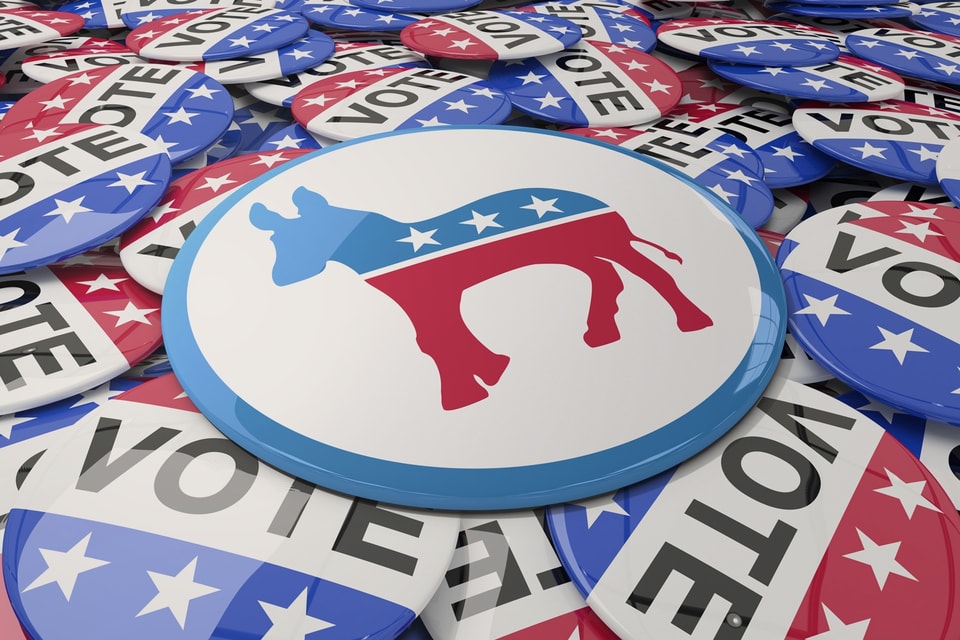Memo Published November 6, 2018 · 5 minute read
Midterm Lesson? Right- and Left-Wing Populism Both Flounder
Lanae Erickson

Last night was a victory for America and for Democrats, led by women, people of color, veterans, and LGBT candidates. In fact, the new Congress will be the most truly representative in history.
Donald Trump was the biggest loser of the night. His brand of toxic, destructive right-wing populism failed the most comprehensive ballot test, the US House elections, with Democrats reclaiming a solid majority. But importantly for Democrats looking to 2020 and our chance to be rid of Trump, we believe the results also show that Bernie Sanders’ left-wing populism fared poorly when put to the test of actually winning elections.
We conducted an election-eve poll of battleground districts, which covered people who voted early or were certain to vote, and analyzed every single ad run by candidates in the DCCC’s Red to Blue races. Both show clearly what voters in 2018 were demanding and how candidates responded to that demand:
1. Democrats won the majority, and it was delivered by mainstream, pragmatic candidates—not left-wing populists.
- Candidates backed by the mainstream New Democrat Coalition flipped at least 25 House seats from the red column to blue last night—that is the entire majority. By contrast, candidates endorsed by the Sanders-style Our Revolution and Justice Democrats failed to flip a single seat for Democrats.
- Seventy-one percent of Red to Blue Democratic candidates were endorsed by the New Dems, while only four percent were backed by Our Revolution or Justice Dems.
- Our election-eve survey with David Binder Research asked Democrats and Independents to think about the Democratic candidate in their district and asked if they would have preferred a more liberal, moderate, or conservative option. A plurality (37%) would not have preferred anyone different. Thirty-five percent would have preferred a more moderate (21%) or conservative option (14%). Just 16% said they would have preferred a more liberal candidate.
- And these mainstream candidates delivered in battleground races last night, while the Sanders-style standard bearers faltered. In IL-14, Lauren Underwood won 52% of the vote in a district that backed Trump by four points in 2016. In VA-07, Abigail Spanberger won 50% in a district Trump won by seven points. By contrast, Justice Dem Randy Bryce won just 42% in WI-01, which matched Clinton’s loss in 2016. While Our Revolution-backed Dana Balter managed just 47% in a district Clinton won by four points.
2. Medicare for All violated the Hippocratic Oath for Democrats.
- Single payer was a political gift to Republicans. Though activists pushed Democratic candidates to support “Medicare for All” during primary season, only one Democrat ran a general election ad touting their support for single payer in a competitive race. That means none of the others believed it would help them win.
- Republicans, by contrast, ran ads attacking Democrats in over two dozen competitive districts on this issue, including against Democrats who never actually supported it. That’s how potent they found it: they lied about their Democratic opponents backing the plan to score political points. And many Democrats who had been pressured into supporting single payer in the primary quickly retreated from it in the general election.
- In our election-eve survey, we asked what one message voters wanted to send on health care with their vote, and 58% said reduce costs (30%) or protect preexisting conditions (28%). A paltry 20% said pass Medicare for All.
3. While single payer was a clear liability, no one ran on the rest of the Sanders agenda either.
- No Democrat in a majority-making competitive district ran even one ad on free college, a federal jobs guarantee, expanding Social Security, or a passing a nationwide $15 dollar minimum wage.
- In our election-eve survey, we asked which candidate voters would be more likely to support, one who supports government working with business to create jobs in the private sector or one who supports a federal jobs guarantee, and 45% said government working with business compared to just nine percent for a jobs guarantee. (Thirty-seven percent picked a conservative option focused on cutting regulations and taxes.)
Looking to the future, voters want the Democratic Party to build a broad and diverse coalition to win elections, not run to the ideological fringe. In our election-eve survey, 70% of Democrats and Independents said they want the Democratic Party to “appeal to a broad range of voters, including people who may have voted for Trump in 2016.” By contrast, just 17% of Democrats and Independents want the Party to move farther to the left in an effort to generate enthusiasm and participation among progressives and liberals.
Democrats, including potential 2020 contenders, should take careful note of the message voters sent this year, both in the primaries and the general election. Voters want to be rid of Trumpism, but they want the kind of leadership being offered by the dynamic Democrats who prevailed last night: a mainstream approach to politics that appeals to a broad coalition, with a progressive generosity of spirit, and a vision for the economy grounded in the promise that everyone should have the opportunity to earn a good life no matter where they live.
Methodology: On the weekend before Election Day, Third Way and David Binder Research conducted an election-eve online survey in the 72 battleground US House districts rated as “Lean” or “Toss Up” by the Cook Political Report as of late October. Democratic and Republican candidates were referred to by name in the survey. The 2,428 voter sample was made up of voters who had voted early or who indicated they were certain to vote. Respondents were drawn from state voter lists and a voter-matched panel.
